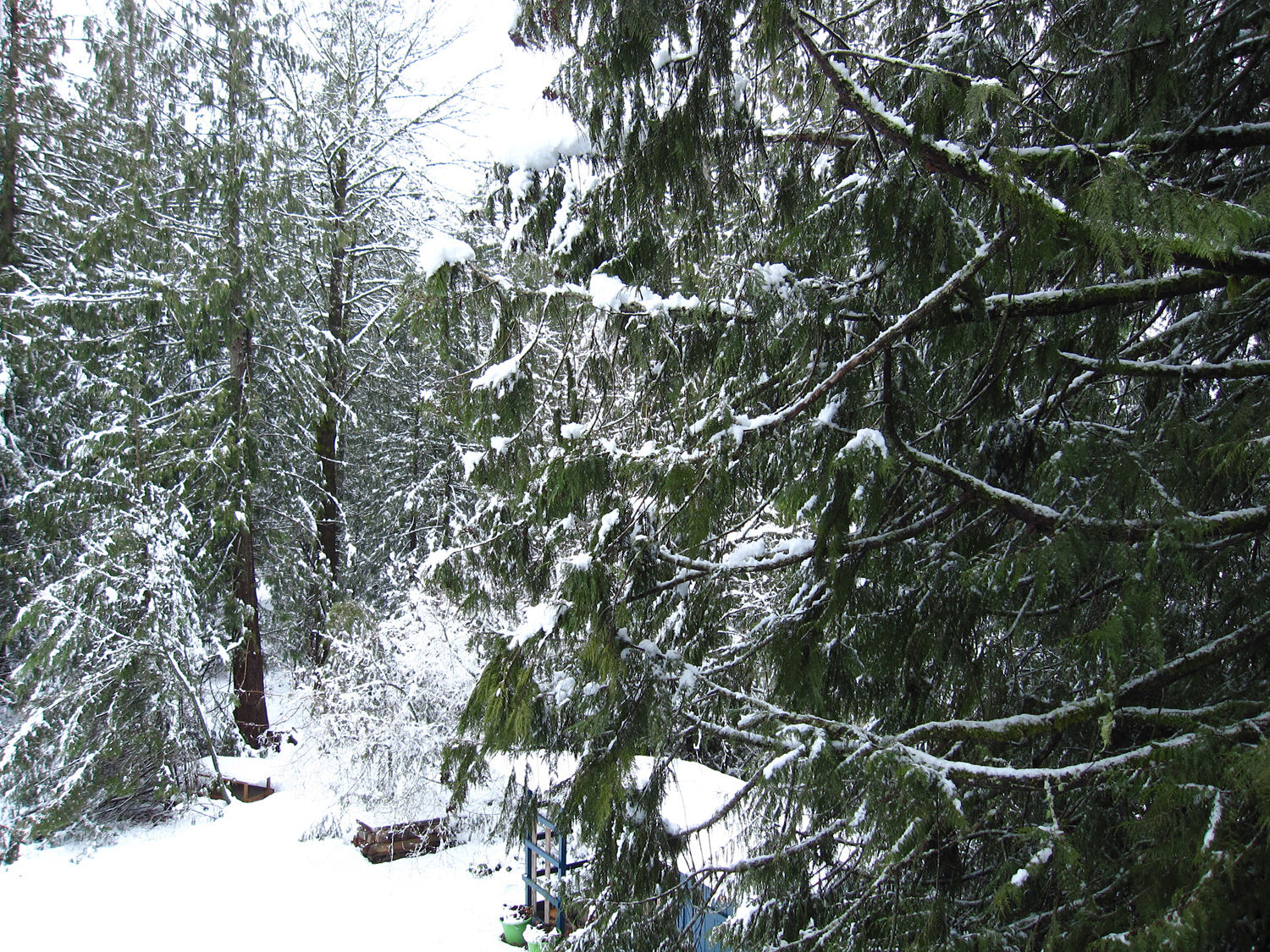eunice kim | nature stories
Written by Miranda K. Metcalf | Published 26 dec 2018
Eunice Kim lives in the foothills of the Cascade Mountains, a stunningly beautiful mountain range that begins in northern California and continues into British Columbia and beyond. The range is filled with pristine alpine lakes, active volcanoes, and flora and fauna quietly holding on to the quickly disappearing natural world. I have spent countless hours exploring the thousands of kilometers of trails in the region and that wildness so close to Seattle is humbling and at times (like when you’re running out of petrol and your phone doesn’t have signal) frightening.
I worked with Kim for five years at Davidson Galleries during which time we hosted two exhibitions of her work. Regrettably, I missed her most recent exhibition Nature Stories, but I am pleased to present images, and her account of the exhibition in this interview. As the weeks would lead up to her exhibitions, I would start to get regular visits from Kim at Davidson, which is located in the heart of the historic district of downtown Seattle. It is a neighborhood filled with businessmen and women from a massive logging company’s headquarters, a heartbreakingly high number of homeless individuals wailing in the streets, and The Beautiful People in their 100% linen San Francisco-made smocks and tan shoulders who come out of God knows where to dine at the $60/plate restaurants with the all white interiors. It’s an intense place. There are a lot people crammed in together trying to navigate each other. On top of it all, gallery work is stressful and the visits from Kim always seemed like she’d appeared from another world, because in a way, she had. I’ve never known anyone like her. Her monoprints were delivered to the gallery in handmade portfolios, strings attached with precise placement, and each piece inside had its own square of glassine cut perfectly to size. She’d come prepared with her own supplies to wipe down our neglected counter tops before carefully placing her works for viewing. These habits when coupled with another personality could easily be anything from mildly annoying to aggravatingly condescending, but this couldn’t be farther from the case with Kim. Her precision is so inert that watching her perform the rituals brought with it the peace of seeing a monk count his beads or a master chef sharpen her knifes. To see it, is to watch a fish in water. After she left I always told myself what an inspiration she was, and asked myself how I could be more like her. I could slow down and be more present and thoughtful about my actions, but inevitably within twenty minutes I would go back to answering emails as quickly as I could while putting my adrenals through the sausage grinder of the strong Umbrian coffee served next door.
All of this is to say, this article is going to be in a different from than any of the others I’ve published thus far. I’m leaving it in a question and answer format. I have so much admiration for how she presents herself and her work that I truly couldn’t say it better myself.
Look out Eunice's studio in Cascade Mountain foothills .
Tell me the story of how you came to printmaking?
I began my college career as graphic design major and took printmaking survey course as an elective. The rest, as they say, is history--I was instantly hooked. What draws me the most to the genre, is my desire to understand materials and processes in depth. I find printmaking to be perfect vehicle for this type of exploration.
Ritual aspect of printmaking is an important part of you what you do, correct? Can you talk about that?
My affinity for rituals goes back many years. It's part innate--I've been drawn to structure ever since I was a small child and something in my DNA makes me gravitate towards it, and part cultivated--having fallen asleep nightly to my grandmother's whispered Buddhist prayer chants, for one. Ritual implies repeated acts, and mindful repetition creates opportunities for refinement, fine-tuning, and distillation. This kind of thing, is what feeds my soul. I find it an antidote to today's 'faster, more, now' reality.
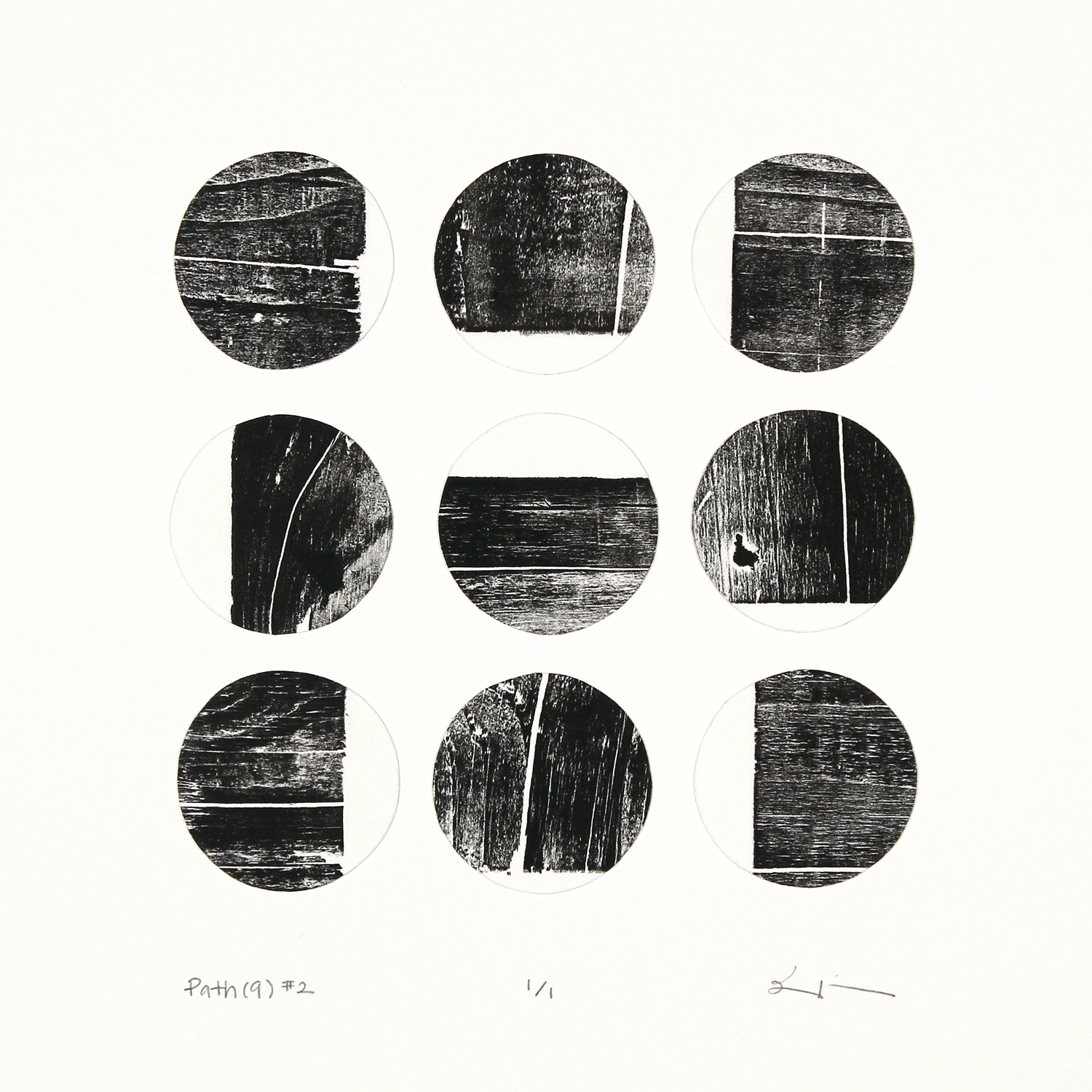
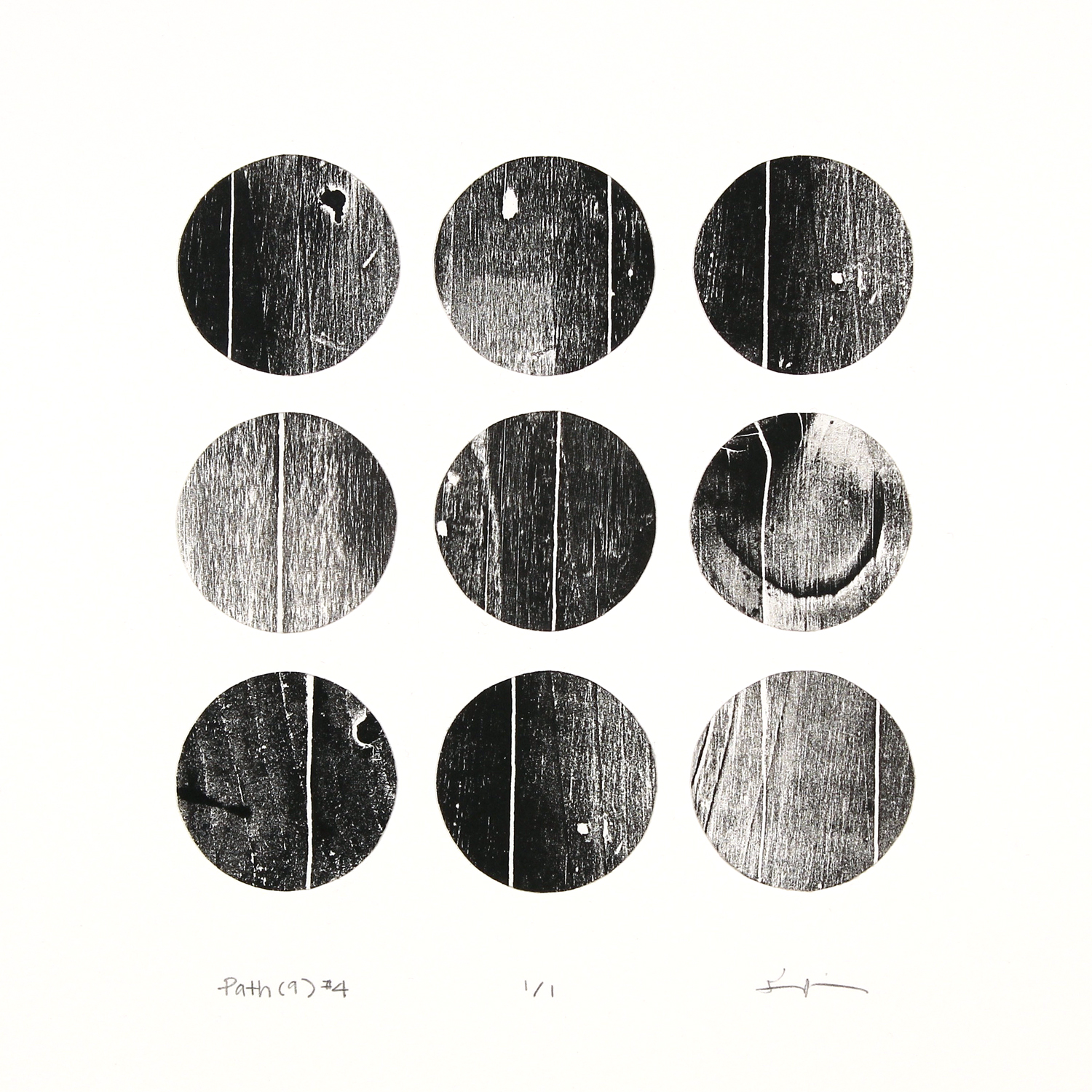
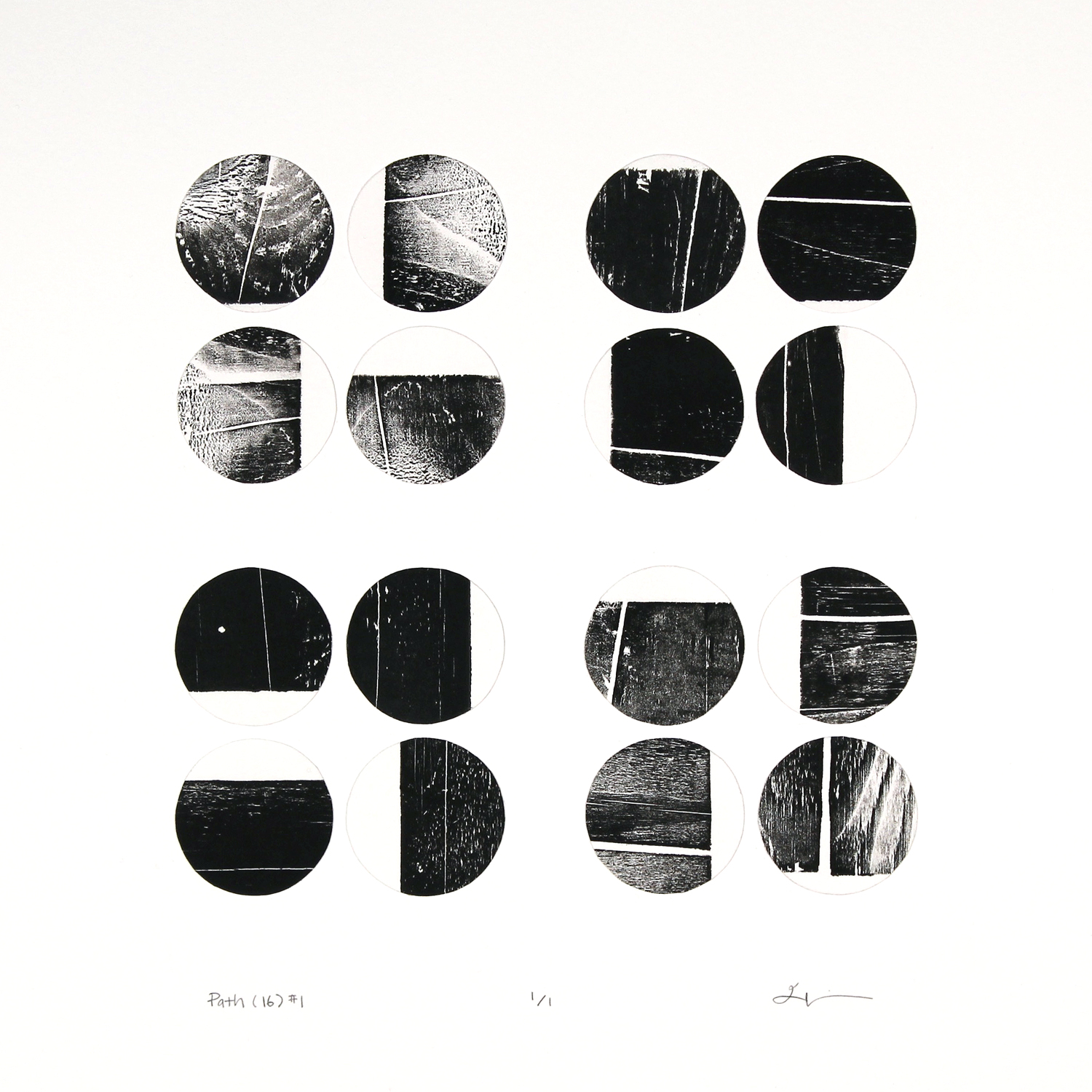
Tell me the story of coming to your sustainable approach to printmaking.
It's about self-preservation, really. Traditional materials and techniques were making me sick, and I had to make a decision: find another way of working or give up printmaking. That latter, of course, wasn't an option. I think often, we come to new things by necessity. And I always stress there's no such thing as a completely nontoxic process. Most products we use in our daily lives, in fact, all have some downsides. A better description would be 'safety conscious.' The goal is to raise awareness to minimize hazard and impact. I should add, I have tremendous respect for traditional approaches to printmaking; they’re the foundations we build on. I do also believe, however, that it’s critical we explore alternate methodologies which are responsive to concerns of our time to remain relevant, all the while preserving the potential and MAGIC inherent in printmaking as a medium.
Is printmaking your primary art practice? If not, how does it fit into the larger picture for you?
Yes, printmaking is my primary practice and any other tangential activities are rooted in and informed by it as well. Most notable is my partnership with Cedar River Watershed, which provides water to over a million people living in our Seattle area. Not to brag or anything, but we here in Seattle have some of the best drinking water in the world. I want people to hear and know about this incredible natural resource and we're working on our third installment of Nontoxic Printmaking @ Cedar River Watershed, where I deploy a portable 'mini' press to engage the community. I try to create and squeeze in these outreach initiatives whenever I can, in an effort to broaden the impact of my studio practice and interface with the public directly. I'm pretty much a hermit, as you know, so it also forces me to get out once in a while.



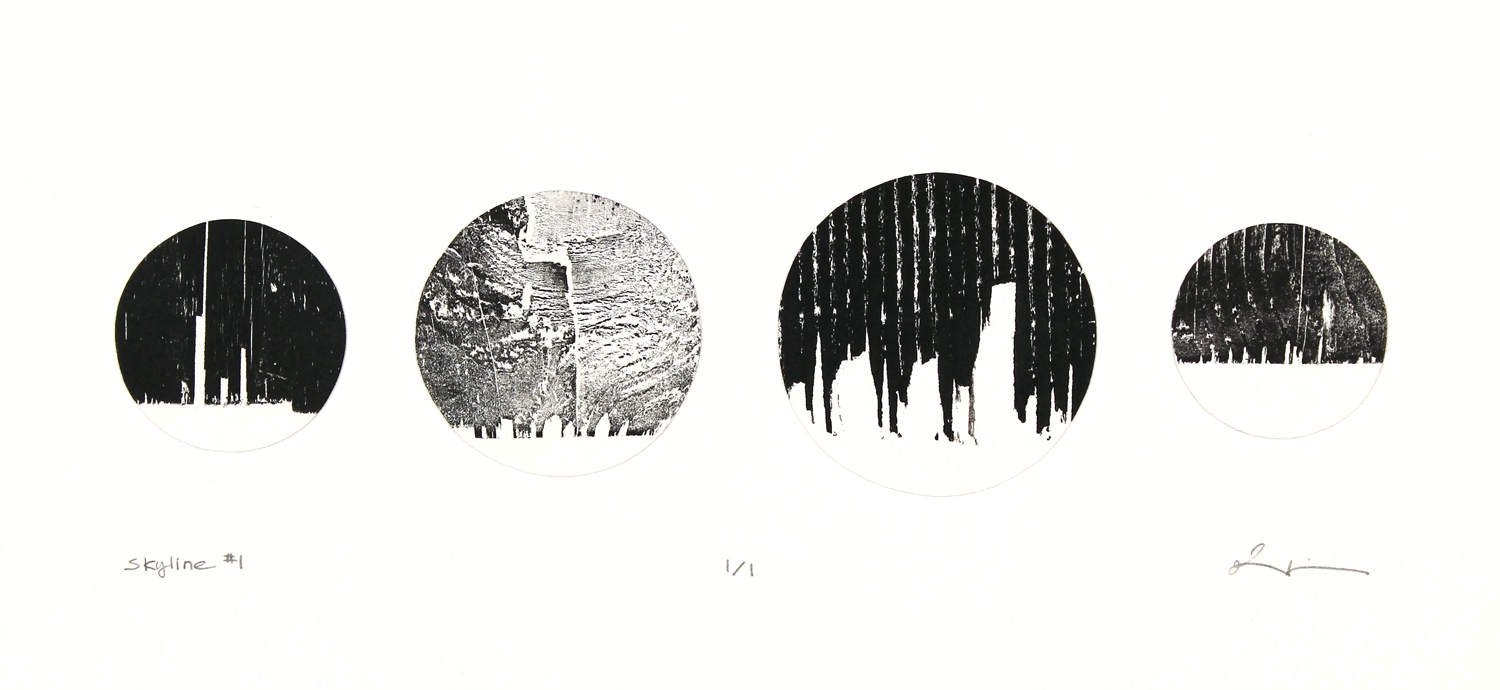
Your new exhibition is a showing of a pretty significant aesthetic and practical shift for you. How did this come about?
It all began when my husband and I tore down a very old barn on our property and I was instantly smitten by the weathered timber that comprised the building. So Nature Stories series was printed entirely from salvaged wood from that demolition. Now, this is something I've been working on for a few years. Exploring different directions and possibilities, and pulling many, many test prints. And late-last year, I finally arrived at something I was happy with. The way I work, concept and technique are always integral and interdependent, and are in fact developed simultaneously. At the start all this, the only thing I knew for certain was my material. I wanted to somehow give second life to this salvaged wood. Some of the questions then I had to answer through inquiry, were how can I best utilize and showcase this material, and what kind of stories does IT want to tell. What's interesting is, it's been both a significant shift, and not. Some of the pieces in the series are pure and straightforward studies on nature and its form, which is at once both beautifully simple and complex. And it's that duality I wish to convey in my work. Others allude to a bit more. Surface Tension, for instance, are contemplations on individual entities, each with their own unique movement and energies, and how each contributes to our overall 'picture.' With Path, I'm thinking about all the different roads we each take, the various ways in which they're taken, and what we might find along the way. All this is very much in the spirit of my past work and dot-based imagery, where I created visual environments wherein each one of my dot marks retains its individuality, while contributing to a larger whole. Only difference is, we've zoomed in on those dots and each is now telling a story.
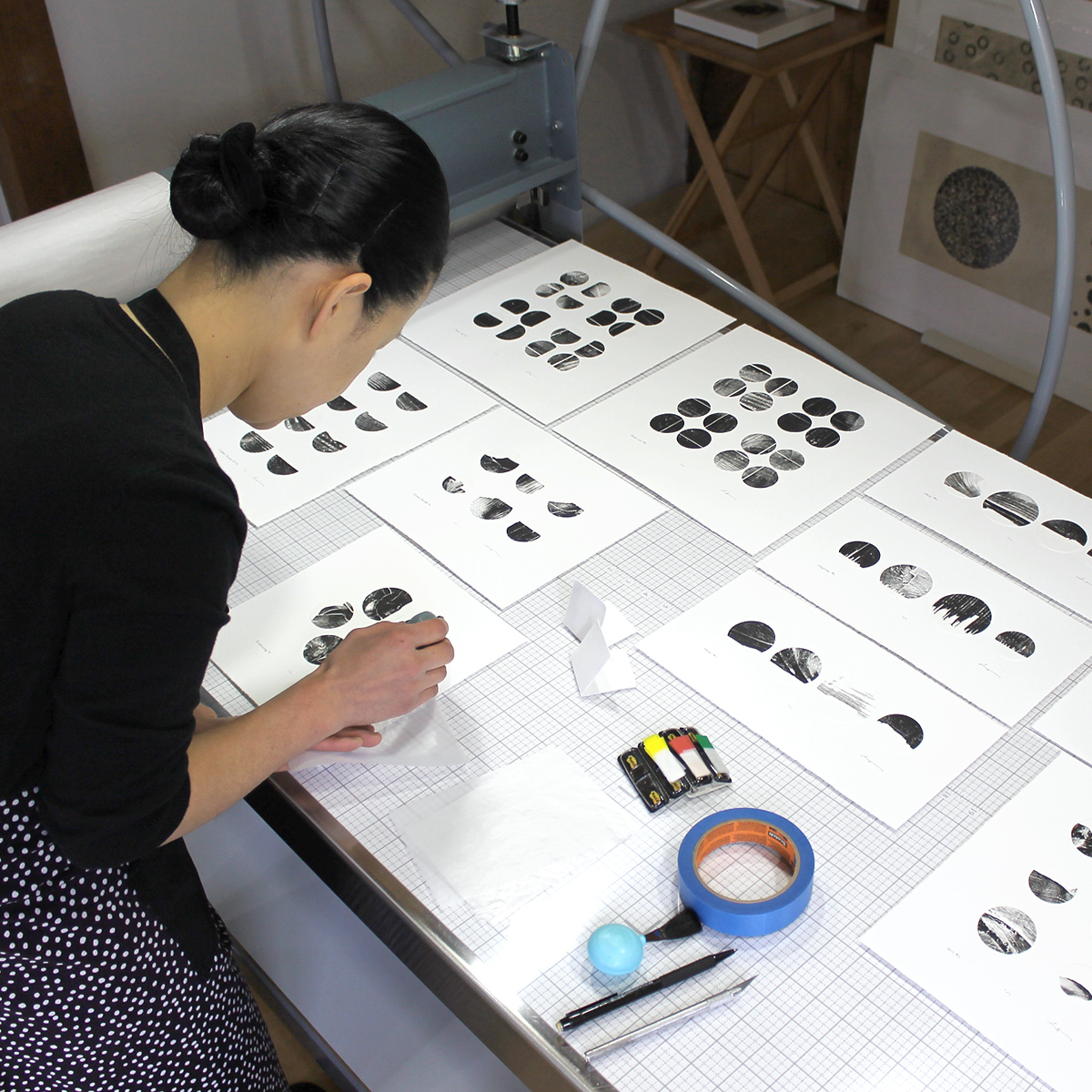
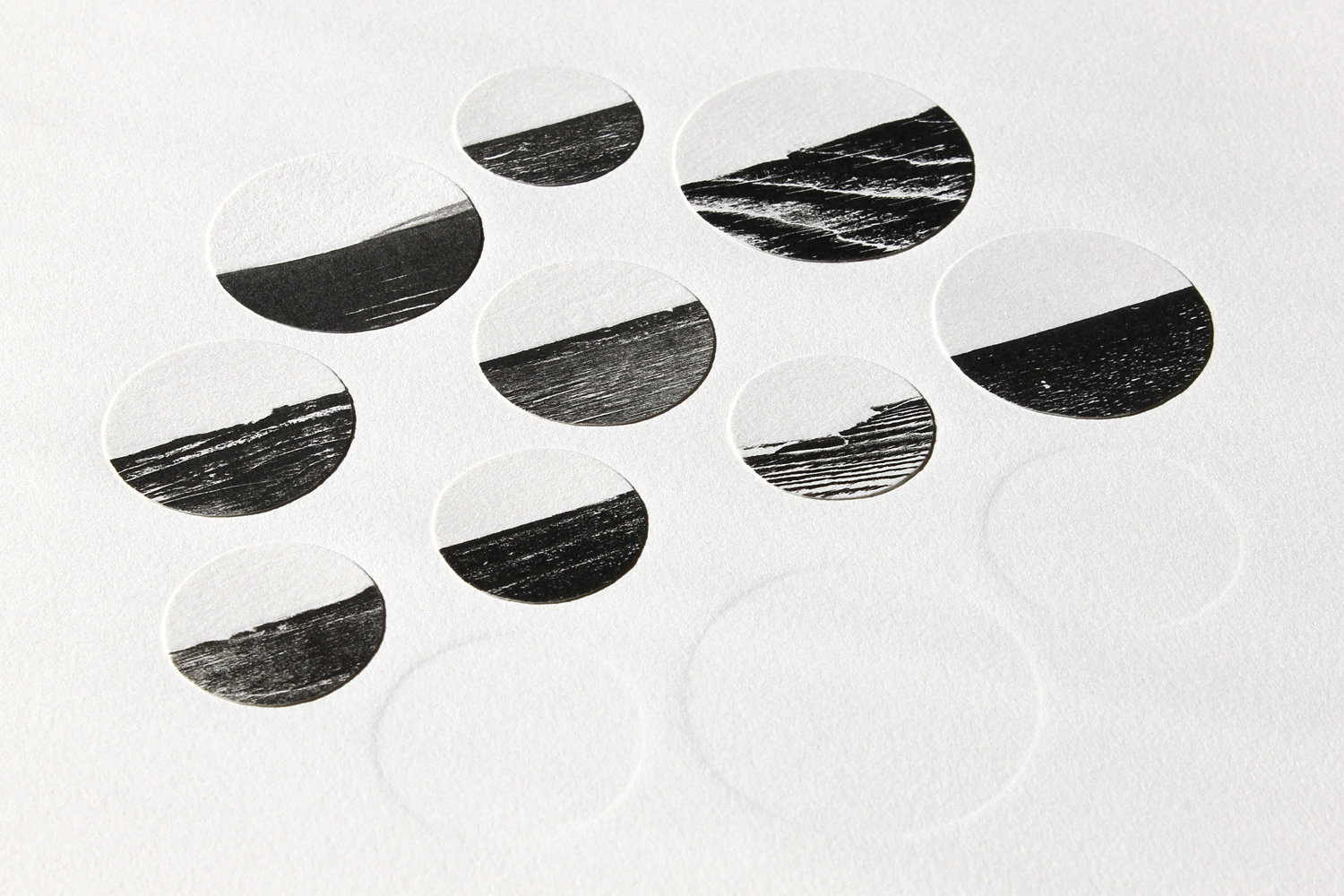
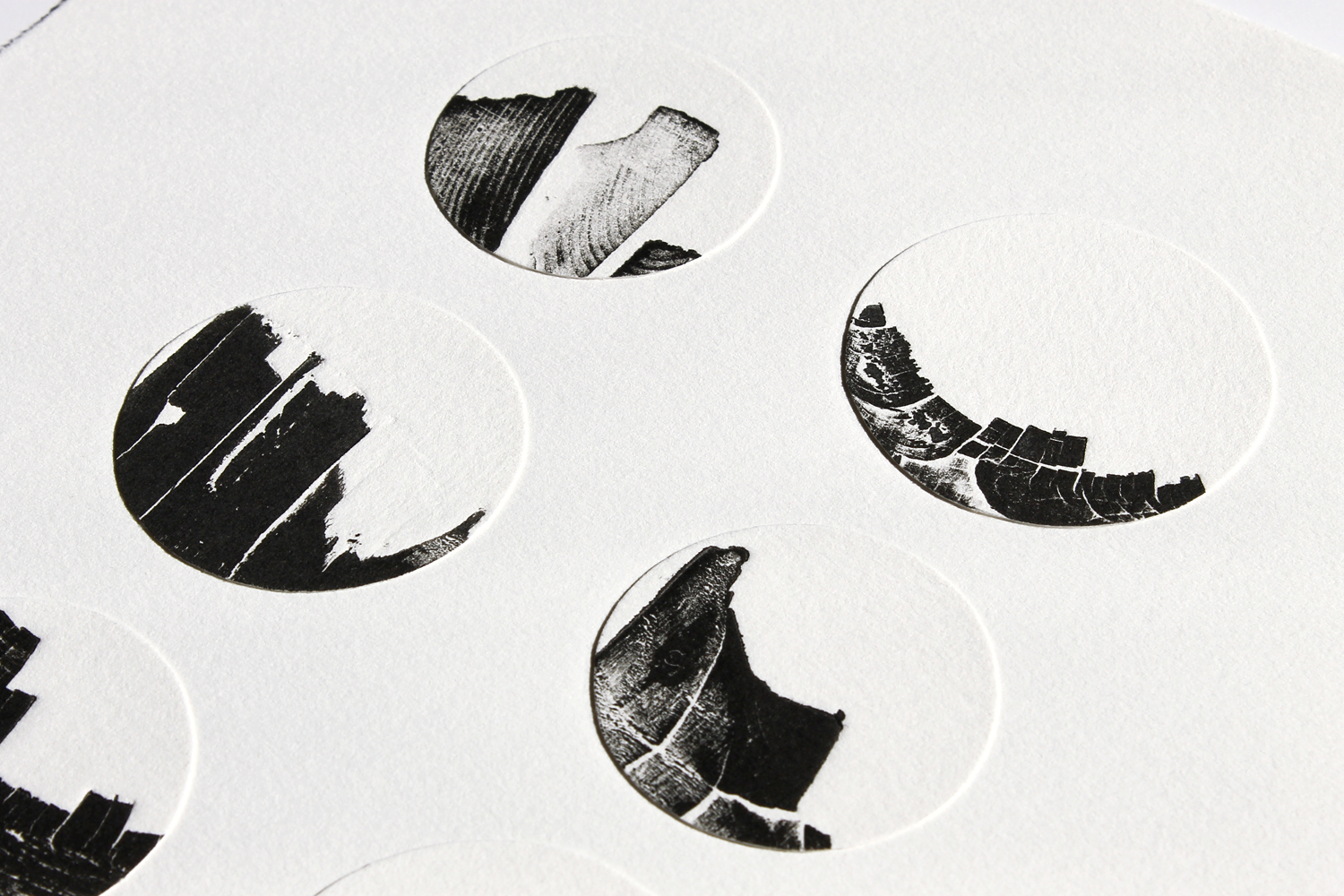
Many of our readers are print connoisseurs and makers themselves, and may wish to know a little more about your process. Will you elaborate?
Absolutely, here it is in a nutshell:
(1) I begin by prepping my plates, which are sliced off and re-sawn from massive beams. It's important to note I make no additional cuts onto the wood surface, as in the way of woodcuts or engravings. One of the criteria I established for myself from the get-go, is that I work strictly with what nature provides. I'm looking for narratives and stories IN the physicality of wood itself.
(2) My printing process is a cross between relief printing and monoprinting. Each inking is varied and executed with eye towards play on the matrix, or what I like to call 'investigative printing.' At this stage, I have no preconception of final imagery or subject matter. I print hundreds of these prints simply focusing on coaxing out and capturing nuanced subtleties, values, and tactility inherent in the wood -- knots, cracks, imperfections, and all.
"Nature Stories" process plates
(3) Then comes the part I call 'mediation in seeing,' because I literally sit there and stare at the prints until narratives begin to emerge and reveal themselves: vast skies, forests, riverways… I find quieting the mind really helps, and the key is framing the imagery just so, so that noise is eliminated and only the essence of the story is presented. These 'individual stories' in various sized circle format are each hand cut.
(4) Next comes actually composing my imagery. Really allowing the narratives to organically come together, I'm following their lead for the most part. I should also note, negative space plays a critical role in this series and is given equal attention as the imagery itself.
(5) Once compositions are finalized, I create a blind embossment plate for each piece and print it onto the backing paper. This way, I know exactly where each circle needs to be placed without having to mark on the paper surface, but more importantly, it adds to the tactility of our final artwork. You've seen the pieces in person Miranda, and you'll recall each circle is set back ever so slightly. It's these almost imperceptible details that, for me, makes the piece.
(6) And finally, circle elements are collaged to complete the artwork.
What has it been like showing this whole new side of your work for the first time?
One of the gratifying things about mounting a show is being able to bring meaningful imagery to my audience. So a big question going into this exhibition for me was, will the viewers 'see' the narratives as I do, or are they all just in my mind? I'm thrilled and heartened to report reception to the work has been enormous, it’s been humbling.
What do you hope people take away from experiencing your work?
I feel this new series could only have been realized here in Cascade Mountain foothills where I live and work, via what I encounter on a daily basis, with the material made available to me. We each contribute something unique to the dialogue and mine perhaps is what can be garnered from this quiet, simple way of life, and what that facilitates. I hope for my audience to take away a little sense of that beauty in simplicity.
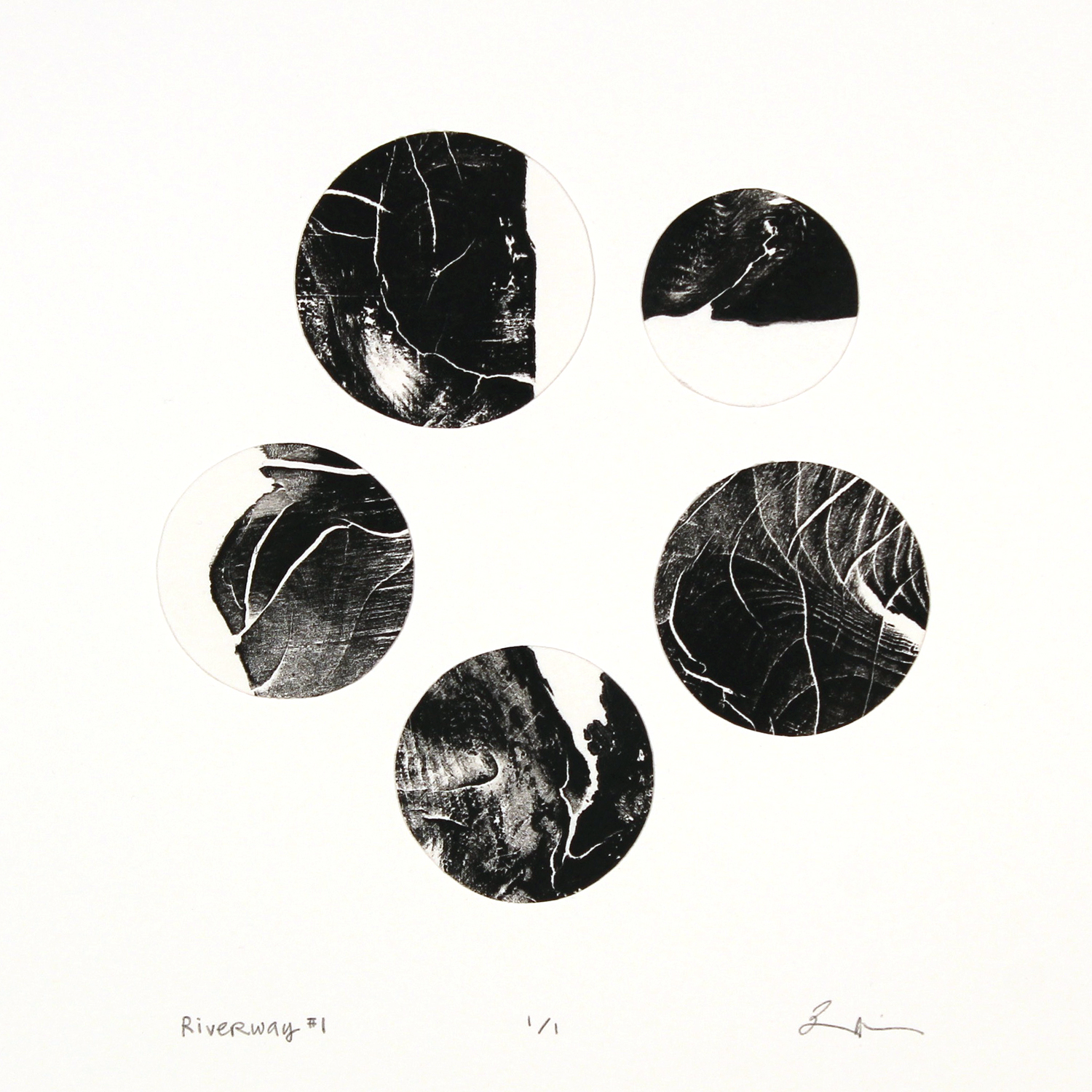
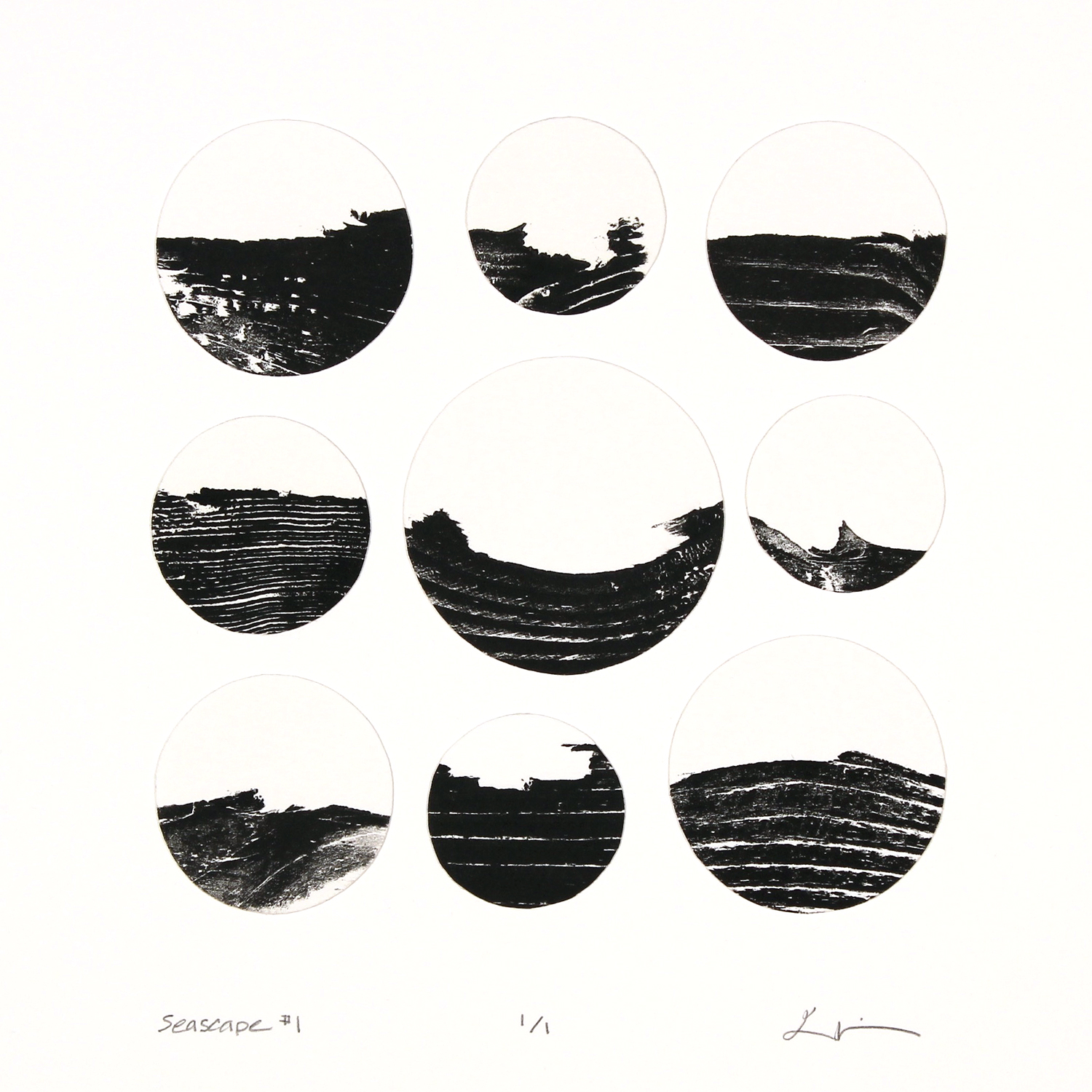
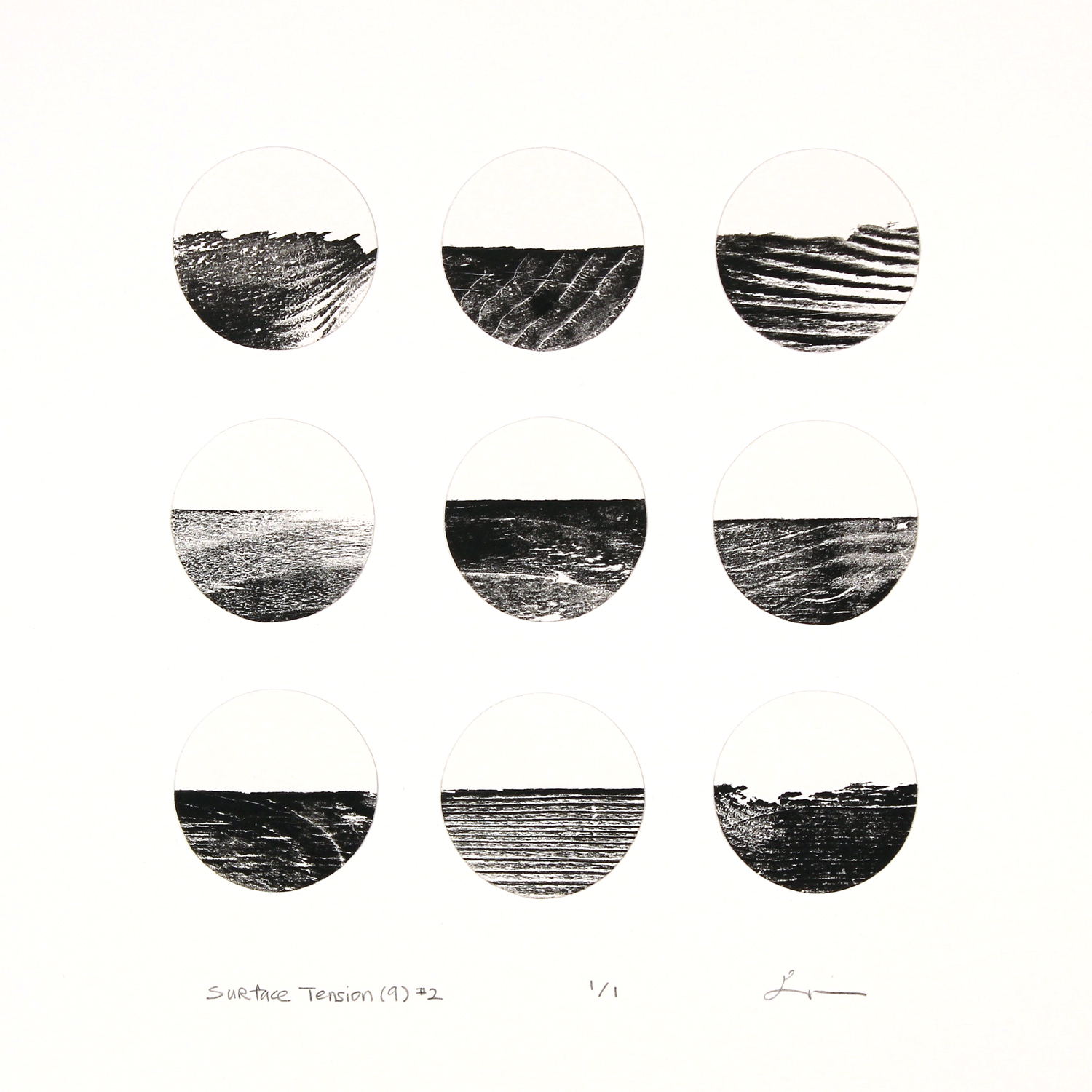

Is there anything you wish you were ask more often about your work?
Possibly influences, and more specifically early influences. Who we are and what we make are products of our experiences, and these things give the imagery larger context and meaning. For instance, the circle is a recurring theme in my work. I find it wonderfully self contained and there's an efficiency to it which I love. It also happens to be a motif which comprised much of my actual physical surroundings when I was growing up in Korea. So these are references I continue to pull from. I believe as long as I'm making work that's genuine and true to myself, there will always be some recognizable thread running through them.
What is the best way for people to learn more about you or get in touch?
Best place to learn more and see some actual work is Davidson Galleries here in Seattle, and I encourage anyone visiting our beautiful Northwest region to come see us. We just wrapped our fifth solo exhibition together this fall, but even when there's not a show up, Sam Davidson and his friendly staff will be happy to pull out pieces for viewing. They maintain the most extensive inventory of my work, which really needs to be seen in person for all its tactile, dimensional qualities. I also invite everyone to check out my website www.eunicekim.net, where you'll not only see images of artworks new and past, but find good deal of resources and past articles on my work.
